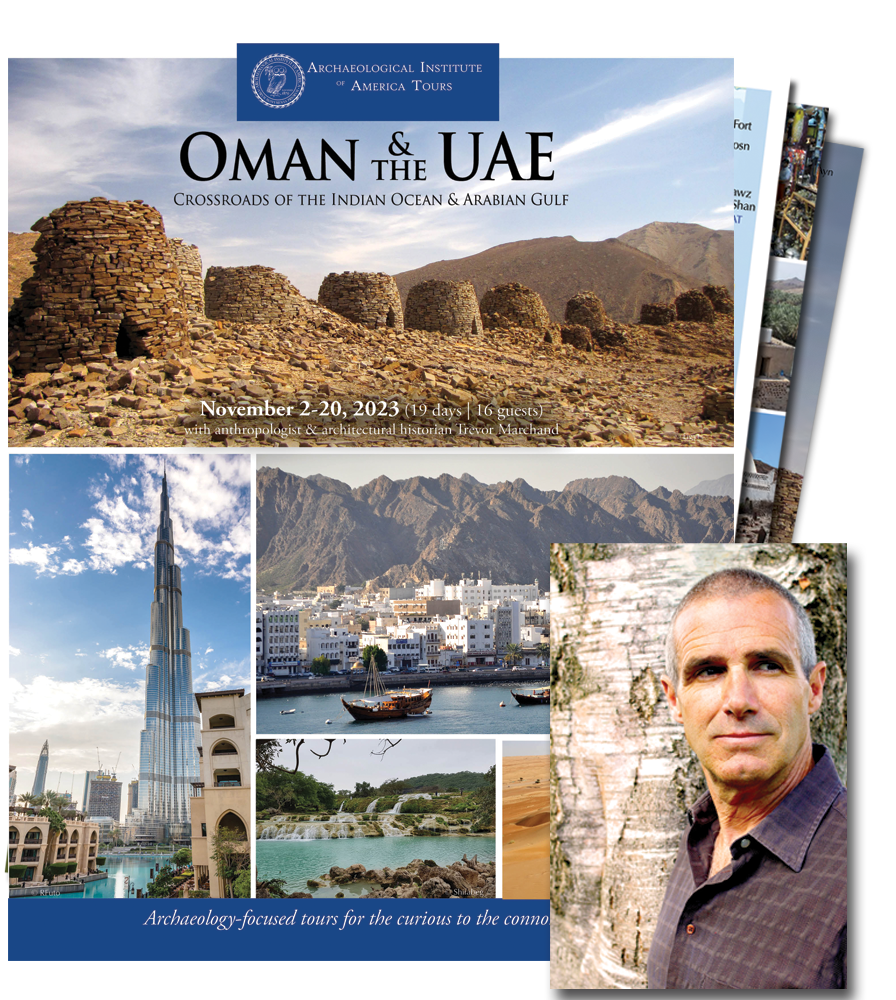This tour has been cancelled for the February 2025 departure, please contact us at 800-748-6262 or aia@studytours.org for more information on other tours in this region when they become available.
Delve into the cultural and geographical diversity of Oman and the United Arab Emirates (UAE) in the company of seasoned study leader Trevor Marchand. Our custom-designed itinerary highlights ancient sites and historical monuments, and helps illustrate how influential geography has been on the region’s history and how the region’s maritime history has linked it to elsewhere in Arabia and as far as Africa and southern Asia.
Begin with three full days in the UAE. Still a little fishing village as of the 18th century, Dubai was a center of pearl exports until the 1930s. Similarly, Abu Dhabi was founded as a simple pearl and fishing village. After the discovery of oil in the Arabian Gulf, Dubai became one of the wealthiest cities in the world, and Abu Dhabi was transformed into a luxurious modern metropolis and the capital of the UAE. But this region was settled many centuries earlier, and we will observe how the old and the new co-exist in intriguing ways.
Spend the balance of our time exploring Oman, which dominated for centuries the maritime trade routes from Moorish Spain to Canton (modern-day Guangzhou, China). Her seafaring merchants traded in such commodities of civilization as frankincense, myrrh, silk, gold, spices, and coffee. Today, Oman takes pride in sharing its rich history with visitors, as demonstrated in its world-class museums.
Altogether we will learn about these countries’ histories, cultures, art, and architecture while witnessing their great geographical diversity, from spectacular deserts and wadis to pristine coastlines, including a reserve for the endangered green sea turtle.
Highlights:
- Six UNESCO World Heritage Sites: Oman’s aflaj irrigation systems, the protohistoric archaeological complex of Bat and Al-Ayn, the immense fort at the oasis of Bahla, the medieval trade city of Qalhat (pending re-opening), and the Land of Frankincense; plus the UAE’s Hili Archaeological Park, part of the “Cultural Sites of Al Ain” listing
- Two full days exploring archaeological sites around Dubai, including the 4,000-year-old site of Al Sufouh; and Abu Dhabi, including the incredible new Louvre Abu Dhabi and the 18th-century Qasr Al Hosn, the city’s oldest fort
- Hasat bin Sult (a.k.a. Coleman’s Rock), site of Oman’s most significant rock art
- Nizwa’s lively Friday Market, whose animal souk is an opportunity to witness the country’s traditional manner of selling livestock
- A visit with a Bedouin family and a night at a lovely desert camp in Wahiba Sands, a 6,000-square-mile desert
- Sur, where many of the trading fleets of Omani ships were built
- Muscat, with its recently-opened National Museum of Oman
- A maximum of just 16 travelers, plus a dedicated local guide/tour manager and Professor Marchand
- An optional, two-night extension in Doha, Qatar
Tour Prices per person (17 nights)
Per person, double occupancy
12-16 Participants $14,395
8-11 Participants $15,395
Single supplement $1,995
Single room supplement will be charged when requested or required (limited availability). With fewer than 8 participants a small group surcharge may be applied.
Extension Prices (2 nights)
Per person, double occupancy
9-16 Participants $1,545
6-8 Participants $1,945
Single supplement $225
Single room supplement will be charged when requested or required (limited availability). With fewer than 6 participants a small group surcharge may be applied.
This tour has been cancelled for the February 2025 departure, please contact us at 800-748-6262 or aia@studytours.org for more information on other tours in this region when they become available.
